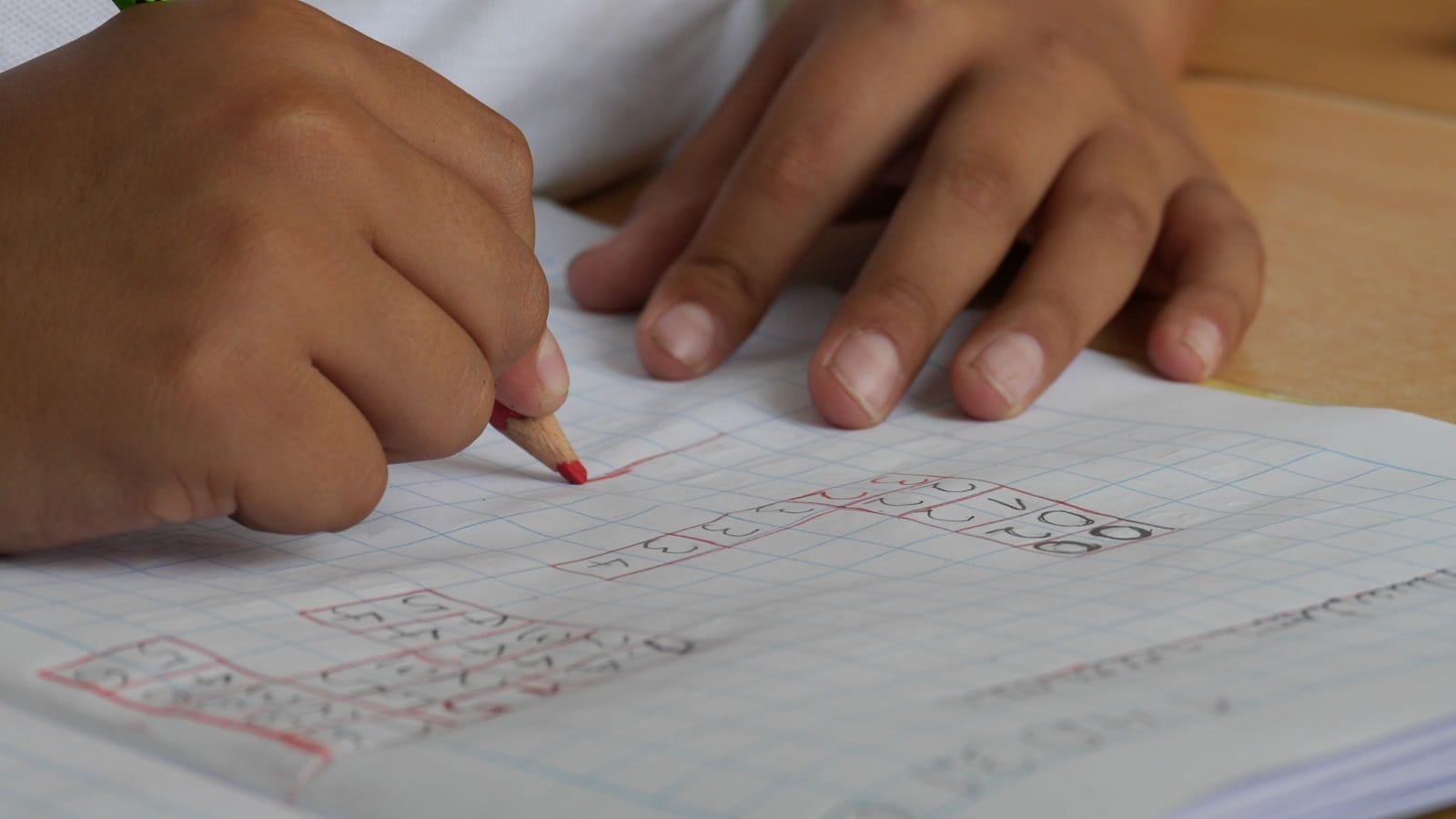Last Updated On: July 1st, 2024
Below you’ll find a detailed breakdown of concepts and material for each level of the ISEE(along with handy sample problems and solutions) that students may not have encountered yet during their normal schooling. To view part one of this blog series, click here. We put together common ISEE topics and concepts, broken down and explained with examples — check out this free resource here: ISEE Concepts
Lower-Level ISEE
On the lower-level test, a fourth or fifth-grader can expect to see these concepts from the fifth-grade curriculum, which might not be taught in class until months after the test:
- Using an input-output table with ordered pairs
- Example 1: What is the rule for the function table below?
Input ♣ Output ♥
1 3
2 6
3 9
- Understand and evaluate whole number exponents
- Example 2: What is the value of 53?
- Use rounding and estimation to find the closest answer to a multi-digit problem
- Example 3: A school is ordering 21 boxes of ice cream that cost $5.70 each. What would be a close estimate of the total cost of the ice cream?
- Find the volume of a three-dimensional figure
- Add and subtract fractions with unlike denominators
- Example 4: Marina has 4 ⅜ feet of rope. She cuts off 2 ¼ feet. How many feet of rope does she have left?
- Use parentheses, brackets, or braces in numerical expressions
- Example 5: What is the value of
- Add and subtract decimals
- Example 6: What is the value of 1.705 ̶ 95?
A student taking the lower-level test might also encounter these concepts from sixth grade or higher:
- Solve two-step equations
- Example 7: What is the value of n in 2n ̶ 5=15?
- Find the mean (AKA average), median, mode or range of a set of numbers, including sets with fractions or decimals
- Example 8: Polly asked the students in her Guided Reading group their ages, which are as follows: 8 ½, 8, 8 ½, 10 ½, and 9 ½. What is the mean age?
- Solve problems with ratios and proportional reasoning
- Example 9: A drink uses 1.5 teaspoons of sugar for every 8 ounces of water. How much sugar would be in 20 ounces of the drink?
- Find the probability of single events
- Example 10: Ana rolls a six-sided number cube once. What is the probability she will roll a prime number?
- Translate words into algebraic expressions and algebraic expressions into words
- Example 11: Write an expression that could be read as, “Three times a number is twice that number plus ten.”
Answers to Lower-Level Example Problems:
1) ♣ × 3 = 2) 125 3) $20 × 6 = $120 4) 2 ⅛ feet 5) 25 6) 0.755
7) n = 10 8) 9 years 9) 3.75 tsp 10) 11) 3n = 2n + 10
Middle-Level ISEE
On the middle-level test, a sixth-grader can expect to see these concepts from the sixth-grade curriculum, which might not be taught in class until months after the test:
- Solve problems with ratio concepts and proportional reasoning
- Example 1: A cookie recipe calls for one cup of sugar and four cups of flour. Paul only has three cups of flour and he wants to keep the proportion of sugar the same. How much sugar should he use?
- Solve percent problems, including finding the percent of a number, solving a percent equation, finding sales tax, and answering questions about circle graphs
- Example 2: A jacket costs $30. If the price increases by 30%, what is the new price?
- Read and interpret charts and graphs, including scatter plots, box and whisker plots, circle graphs
- Geometry: Identify nets of 3-dimensional figures, find surface area, graph polygons in the coordinate plane, find the volume of three-dimensional figures
- Example 3: The side length of a cube is 4 inches. What is its surface area?
- Find the probability of single events
- Example 4: Ana rolls a six-sided number cube once. What is the probability she will roll a prime number?
- Exponents: Find the value of an exponent, solve order of operations problems with exponents
- Example 5:
- Negative numbers: Understand and use negative numbers
- Circles: Identify the parts of a circle
- Solve word problems involving speed and distance
- Example 6: Jonah drives 80 miles at an average speed of 60 mph, without stopping. How long is his drive?
A student taking the middle-level test might also encounter these concepts from seventh grade or higher:
- Solve advanced average problems
- Example 7: Rosa has an average score of 70 on her first three quizzes. Which score does she need on her fourth quiz to raise her average to 75?
- Solve ratio/geometry problems involving similar figures
- Find the probability of compound events, find the probability of combinations of events
- Example 8: Lacey has 8 white socks, 6 black socks, and 2 blue socks. If she randomly grabs two socks from her drawer, what is the probability they will both be black?
- Solve word problems involving exponent patterns
- Slope: Interpret graphs of lines, use slope-intercept form, find the slope of a line when given two points on the coordinate plane, find perpendicular slope
- Example 9: Line A goes through points (5, 5) and (10, 7). What is the slope of the line perpendicular to line A?
- Solve problems with square roots
- Example 10: Which whole number is closest to
- Negative numbers: Apply the rules of addition, subtraction, multiplication, and division with negatives; solve word problems and equations with negative numbers
- Example 11: What is x in the equation ?
- Find the area and circumference of a circle
- Example 12: The area of a circle is 16. What is its circumference?
- Identify and apply mathematical properties (Commutative, Associative, etc.)
- Solve problems using the Pythagorean Theorem and 3-4-5 Triangles
- Example 13: The two smaller legs of a right triangle measure 6 feet and 8 feet. How long is the hypotenuse?
- Algebra: Use variables to create equations to represent real-life situations, interpreting equations; manipulate equations with two variables
- Example 14: A car salesman is paid a flat monthly amount, plus a commission based on the number of cars he’s sold. His monthly salary is represented by the equation 500 + 750c. If the variable c represents the number of cars sold, what does the number 750 represent?
Answers to Middle-Level Example Problems:
1) cup 2) $39 3) 96 in.2 4) 5) 53 6) 1 hours 7) 90 8) 9) 10) 8 11) -3.5 12) 8 13) 10 14) the amount the salesman is paid for each car he sells
Upper-Level ISEE
On the upper-level test, an eighth-grader can expect to see these concepts from the eighth-grade and/or algebra curriculum, which might not be taught in class until months after the test (or the year after for students who are not yet taking algebra):
- Use factoring and FOIL to simplify and solve expressions and equations, including quadratic equations
- Example 1: How do you express (x + 3)2 using the form ax2+bx+c?
- Example 2: Simplify
- Solve advanced average problems
- Example 3: Rosa has an average score of 70 on her first three quizzes. Which score does she need on her fourth quiz to raise her average to 75?
- Slope: Interpret graphs of lines; use slope-intercept form; find the slope of a line when given two points on the coordinate plane; find perpendicular slope
- Example 4: Line A goes through points (5, 5) and (10, 7). What is the slope of the line perpendicular to line A?
- Understand and use scientific notation
- Example 5: What is the value of the numerical expression 2.9 x 107 + 1.8 x 106?
- Add, subtract, multiply, and divide polynomials
- Example 6: Simplify 2x4y3 + 2x2y – (x4y3 + x2y).
- Multiply, divide, and factor exponents, including negative exponents
- Example 7: Simplify
- Find the power to a power and/or square root of an algebraic expression
- Example 8:
- Solve problems involving combinations and permutations
- Example 9: Out of eight members of a soccer team, three will make the all-star team. If every team member has an equal chance of being chosen, how many combinations of three team members are possible?
- Solve absolute value equations and inequalities and interpret their graphs on a number line
- Example 10: Describe all values of x for which ?
- Use dimensional analysis (or another method) to convert between multiple units of measurement
- Example 11: A bicyclist is traveling 15 miles per hour. How many yards per minute is he traveling? (There are 1,760 yards in a mile.)
- Find the probability of dependent events; find the expected number when given a probability table.
- Example 12: There are four black jellybeans, two green jellybeans, and one orange jellybean in a jar. Donald chooses two jellybeans without replacing them back in the jar. What is the probability that Donald chooses the orange jellybean and then a green jellybean?
- Interpret the graph on a number line of a set of inequalities.
A student taking the upper-level test might also encounter these concepts from ninth grade or higher:
- Apply the trigonometric functions (SOHCAHTOA) to triangle problems
- Example 13: The hypotenuse of a right triangle is 12, its smallest side is 7, and its smallest angle is 20°. In terms of cosine20°, what is the length of the middle side?
- Understand imaginary numbers and use them in equations and expressions.
- Example 14: In terms of i, what is the solution(s) to x2+100=0?
- Add and subtract (and possibly multiply or divide) matrices.
- Example 15:
Upper-level students might also encounter special symbol problems, which may be unique to standardized tests and not in their grade-level curriculum at all:
- Example 16: If Jx= 5x – 7, what is J7+J8?
Answers to Upper-Level Example Problems:
1) 2) 3) 90 4) 5) 6) 7) 8) 9) 56 10) 11) 440 12) 13) 12cos20° 14) 15)



















